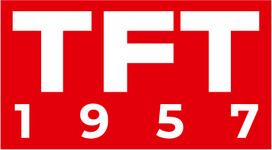Increasing its focus on broadcast, the company recently announced a cloud-based audio mixer.
Audio-products manufacturers whose origins lie in music production form the bedrock of broadcast audio’s own historical foundations. From the gold-standard transducers of Sennheiser and Shure to the battleship SSL audio consoles on which entire classic recording studios were built, these products were as much instruments as technology platforms.
In the more virtual version of that universe, those manufacturers are joined by Waves, the Israel-based developer and supplier of professional digital-audio-signal–processing systems, which won a Technical Grammy Award in 2011. Celebrating its 30th anniversary this year, Waves has become as synonymous with digital-audio processing as names like Fairchild and Teletronix were for midcentury music mavens.
Setting the stage for its next inflection point, Waves has moved into the cloud. At the end of May, the company announced its Cloud MX cloud-based audio mixer, which is powered by a cloud-based version of Waves’ 32-bit–floating-point eMotion LV1 hardware mix engine and augmented by Waves’ arsenal of audio plugins.
Breaking Into Broadcast
Although music production remains a key market vertical, Waves has been a growing force in broadcast audio, including sports, for which sonic quality is an increasingly critical component.
“The obvious thing that most people see when they think of Waves is for producing Grammy-winning records,” says Greg Kopchinski, product manager, Live & Install, Waves. “But what people don’t realize is that there’s a whole collection of processing plugins that support everything from noise reduction to improving the sonic clarity of individual channels or the complete mix itself. Whether it’s a talking head or a group of commentators, we have a number of tools that help an engineer deliver a pristine audio program. And we’ve also partnered with and incorporated the Dugan Speech Automixer capabilities that are used already in broadcast today. Engineers in broadcast sports and live events have a lot of the same requirements in that you have commentators in loud environments that need to be able to have their broadcast audio processed to make it sound as good as if they’re sitting there in the room talking to you. Whether that’s a matter of EQing and filtering to actually applying some AI-driven noise reduction, Waves has been addressing the needs of the broadcast-sports market.”
Kopchinski contends that broadcast sports has been pioneering in the transformation of workflows and workforces from centralized to remote and distributed. “Sports was forced very quickly into this by the pandemic, but sports broadcasters adapted quickly and took on leadership roles in how new workflows would evolve. Waves is part of that.”
Regarding the shift to cloud-based operations, he says the Cloud MX is a logical next step from what have already become largely virtual workflows.
“What we have learned from broadcasters that we’re doing early trials with is that, in their cloud workflows, they’re already using NDI as the primary transport protocol between all the production tools,” he explains. “What we’re able to do is route the audio in a way that [allows them to] pick off the specific audio channels that they want from their NDI streams and make them available to all of the audio processing in the mixer. What we’ve done is take a classic live mixer and create a cloud-based version that allows operators working literally anywhere in the world to access that cloud audio mixer, running on AWS. And, as long as their production streams are also in the cloud, they can take full advantage of the mixer as if they’re operating it right there in their own backyard.”









